In the episode in this series on Aristotle I wrote:
It is important to note, for the evolution of scientific thought in Europe throughout the centuries after Aristotle, that when applied to nature he didn’t regard mathematical proofs as valid. He argued that the objects of mathematics were not natural and so could not be applied to nature. He did however allow mathematics in what were termed the mixed sciences, astronomy, statics, and optics. For Aristotle mathematical astronomy merely delivered empirical information on the position of the celestial bodies. Their true nature was, however, delivered by non-mathematical cosmology.
In the next three episodes I will be taking a separate look to the three so-called mixed sciences–astronomy, optics, statics–starting with astronomy, because all three would go on to play a significant role in the development of physics in the Early Modern Period.
We have already seen that Aristotle propagated a homocentric, mathematical, astronomical model of the cosmos that was originally conceived by Eudoxus of Cnidus (c. 390–c. 340 BCE), and then further developed by Callippus (c. 370–c. 300 BCE) and Aristotle himself. However, we don’t have any real astronomical texts from any of the three. I what follows I shall be looking at the work of the practical astronomers Hipparchus (Greek: Ίππαρχος, Hipparkhos) (c. 190–c. 120 BCE) and Ptolemaeus (Greek: Πτολεμαῖος, Ptolemaios, English: Ptolemy), which basically means the work of Ptolemaeus, as most of what we know about Hipparchus is taken from the Geographica of Strabo (63 BCE–c. 24 CE), the Naturalis Historia of Plinius (23–79 CE), and Ptolemaeus’ Mathēmatikē Syntaxis or Almagest as it is more commonly known.
Although Ptolemaeus was one of the most influential scholars in antiquity we know almost nothing about him. He appears to have lived and worked in the city of Alexandria during the second century CE and that is quite literally all we know.
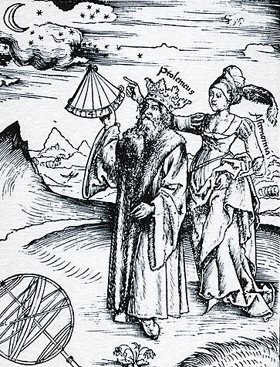
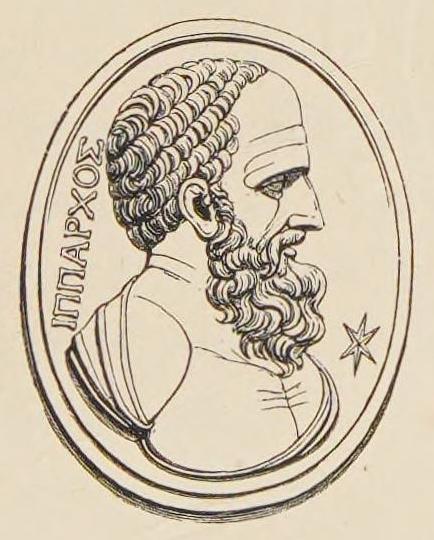
We have exactly the same problem with Hipparchus who was born in Nicaea, which is now in Turkey, and is said to have died in Rhodes. The dates given for his life are guestimates based on the known dates of some of his astronomical observations.
Starting with Ptolemaeus’ Mathēmatikē Syntaxis, what this represents is a fully fledged science in the modern sense but which in its development goes back more than a thousand years. The Mathēmatikē Syntaxis is a vast collection of empirical data, which is then analysed to produce a mathematical model of the observable celestial sphere. It is in this sense no different to the astronomical work of Copernicus or Tycho Brahe and the only thing that separates from the work of John Flamsteed, in the time of Newton, is that much of Flamsteed’s empirical data was acquired with a telescope, an instrument that the earlier astronomer did not have available to them.
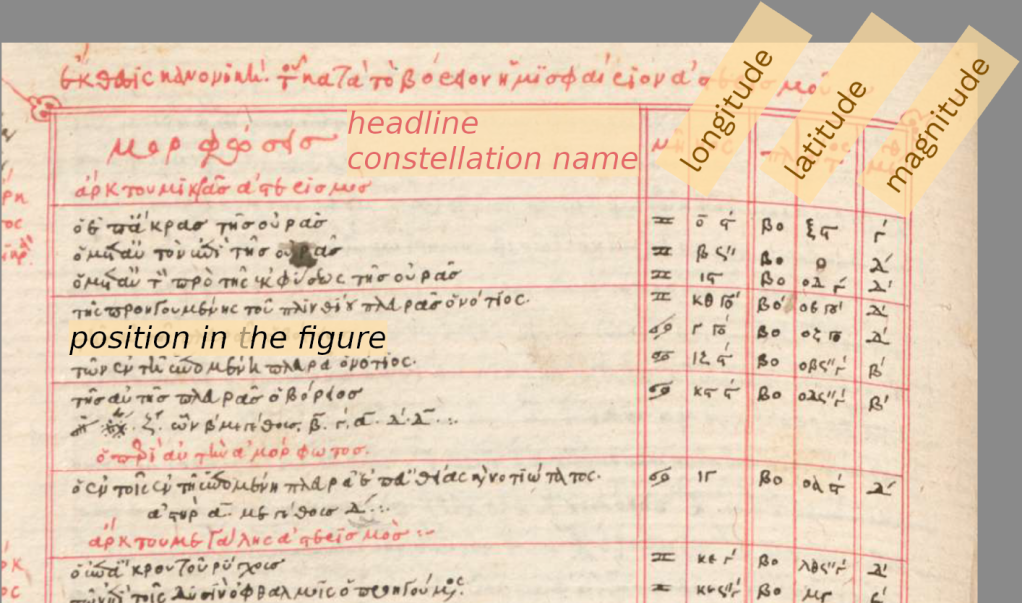
The Mathēmatikē Syntaxis was published sometime in the middle of the second century CE. It was translated into Arabic in total five times starting around eight hundred. Islamic astronomers studied, analysed, and criticised it. They added new mathematical methods to improve it, but they did nothing to change its fundamental structure.
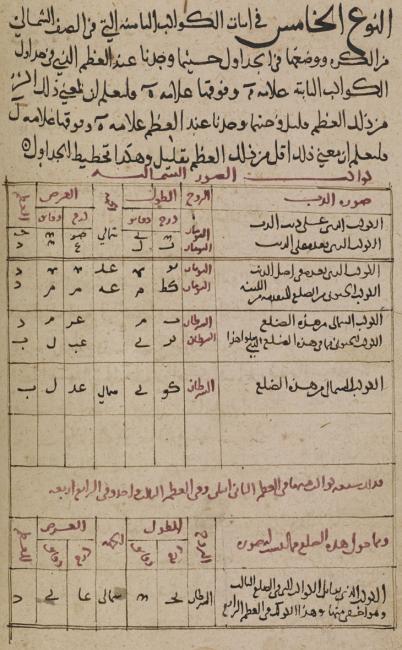
It was translated both from the original Greek and from Arabic into Latin in the twelfth century, again without major change.
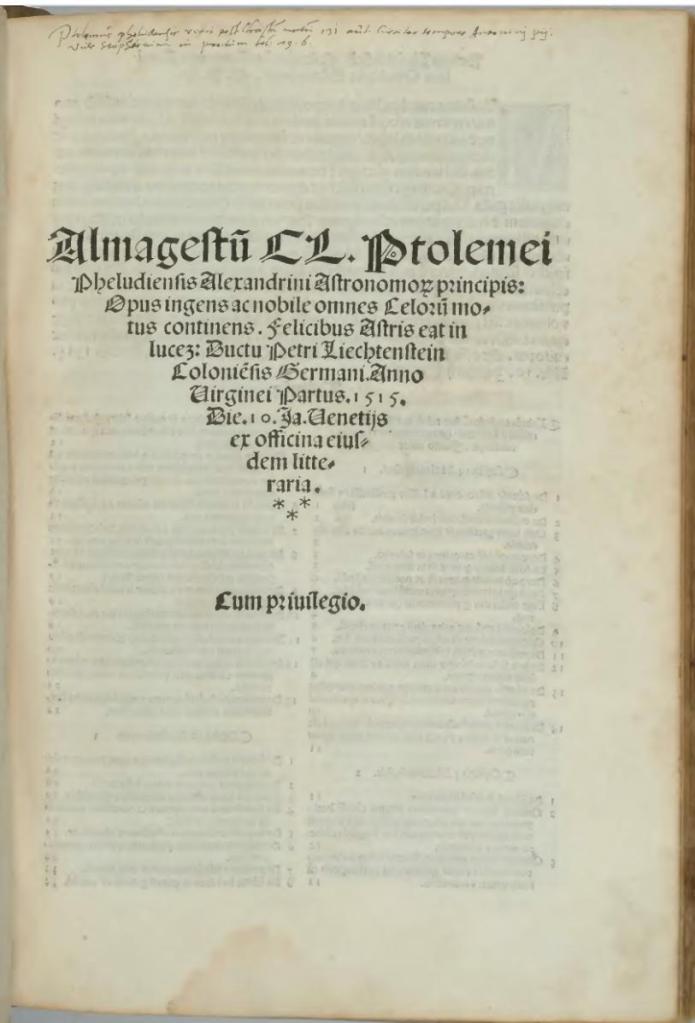
In the fifteenth century Peuerbach and Regiomontanus produced their Epitome of the Almagest, for Cardinal Bessarion, an updated, modernised, shortened, mathematically improved version of the Almagest.
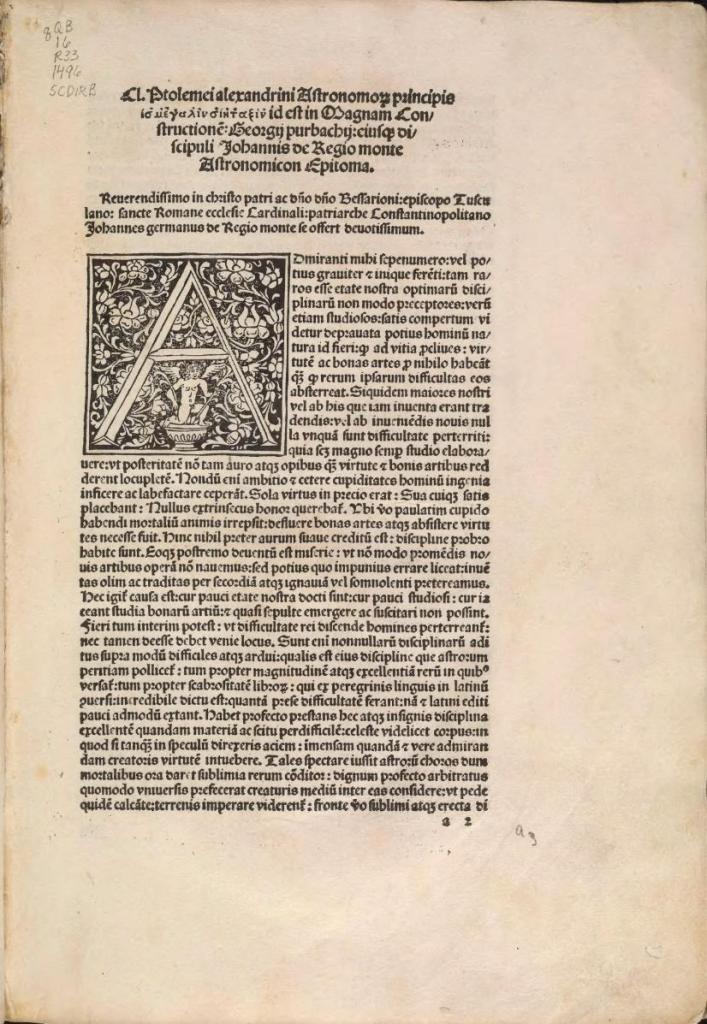
The basic concept and structure, however, remained the same and this in its printed version from 1496 became the standard advanced astronomy textbook in Europe. Copernicus, who learnt his astronomy from the Epitome of the Almagest, and modelled his De revolutionibus (1543) on it. TheMathēmatikē Syntaxis was and remained the architype for a general presentation of astronomy.
Ptolemaeus’ model is a geocentric one for the obvious reason that it best fitted the available empirical data. As far as the observer is concerned there is no indication that the earth moves in anyway whatsoever, it’s a stable non-moving platform, as far as the observer can tell. This is what makes the mental spring to a heliocentric model so extraordinary. However, even within a heliocentric paradigm astronomical observation remain by definition geocentric until the late twentieth century when the human race made its first tentative steps into space.
Why am I saying this? There is a widespread misconception that somehow Copernicus created a completely new astronomy when he published his De revolutionibus, in reality he didn’t, he ‘merely,’ where merely is doing a lot of work, hypothesised a new model within the astronomical frame that Ptolemaeus had given him in his Mathēmatikē Syntaxis. Tycho Brahe did nothing other with his geo-heliocentric model. The observational astronomy remains the same the mathematical interpretation of the acquired data changes.
Regiomontanus, Wilhelm IV of Hesse-Kassel, and Tycho Brahe all recognised that the data set delivered up in the Mathēmatikē Syntaxis had become corrupted by constant copying of manuscripts and all set about creating new data but using the same basic techniques and instruments as Ptolemaeus. Regiomontanus died before his programme really got of the ground but both Wilhelm and Tycho created new accurate data sets. Tycho developed another new interpretation of the data with his geo-heliocentric model.
A simplified, short explanation of the emergence of modern science during the Early Modern Period is that the qualitative natural philosophy of Aristotle was replaced by a quantitative natural philosophy in which empirical data was analysed and interpreted mathematically. The oft quoted mathematisation of science of which Newton’s Principia Mathematica is held up as the prime example. Ptolemaeus’ Mathēmatikē Syntaxis already offered up a role model for this way of doing science. However, because Aristotle had claimed that mathematics does not or cannot describe reality the Mathēmatikē Syntaxis was generally interpreted, but not as we will see by Ptolemaeus, as being merely a calculating device to determine the position of the celestial object for astrology, cartography, navigation, etc. This, of course, changed with Copernicus, as astronomers began to regard their mathematical models as describing reality. Astronomy became one of the principle driving forces behind the seventeenth-century mathematisation of science.
I’m not going to give a detailed analysis of everything that is in the thirteen books of the Mathēmatikē Syntaxis. I would need a whole blog series for that. However, I will make some salient points of what Ptolemaeus delivers in his complete package.
In the first book he describes a basically Aristotelian image of the cosmos. The Earth a sphere at the centre of a spherical cosmos. Without mentioning either Aristarchus of Samos, who is credited by a couple of sources with having proposed a heliocentric cosmos, or Heraclides Ponticus (c. 390–c. 310 BCE), who proposed a geocentric system with diurnal rotation, Ptolemaeus criticises those who would attribute diurnal rotation to the Earth, anticipating a common criticism of Copernicus. He argues quite logically that if the Earth was rotating on its axis the resulting headwind would cause havoc. Copernicus opposed this argument correctly by claiming that the Earth carries its atmosphere with it in a sort of envelope but couldn’t explain how this physically functioned. Much of the history of physics of the seventeenth century are the incremental steps towards supplying the solution to this problem, culminating in Newton’s theory of universal gravitation.
Ptolemaeus deviates strongly from Aristotelian philosophy in two important aspects. Firstly, it is fairly obvious that he regards his mathematical models as describing reality and not just being a method of calculating the positions of celestial objects. This is something that tended to be ignored by the medieval Aristotelian philosophers, who used the Mathēmatikē Syntaxis. Secondly, because it was not capable of explain all of the properties of the planetary orbits, he abandoned the homocentric spheres model replacing it with variations on an deferent /epicycle model, combined with an eccentric, i.e., the deferent is not centred on the Earth but a point some distance away from it, and with the uniform circular motion measured from an equant point, an abstract point equidistant from the eccentric point as the Earth.

This complex geometrical construction led several times down the century to a rejection of the Ptolemaic astronomy and the demand for a return to the Aristotelian homocentric astronomer. The last attempt being by Girolamo Fracastoro (c. 1477–1553) and Giovanni Battista Amico (1511? – 1536), Fracastoro’s book Homocentricorum sive de stellis (Homocentric [Spheres] or Concerning the Stars) being published in 1538, just five years before De revolutionibus.

Ptolemaeus was by know means the originator of all that is contained in his Mathēmatikē Syntaxis, which is a presentation of accumulated astronomical knowledge produced over a couple of thousand years. The most extreme view held by some historians is that he stole or plagiarised all of it from Hipparchus. Others are less drastic in their judgement. However, there is no doubt that he owed a major debt to Hipparchus, which he partially acknowledges.
The story, however, does not begin with Hipparchus. European astronomy has its principal roots in the astronomy of the Babylonians, who began systematic observations of the celestial sphere because of their astrological belief that the heavens controlled/effected life on Earth. Over the centuries they accumulated a vast amount of astronomical data out of which they developed accurate models to predict the movements of the celestial bodies. Unlike the Greeks, these were not geometrical models but algebraic algorithms. They also developed an accurate algorithm to predict lunar eclipses. They also had an algorithm to predict when a solar eclipse might take place but could not predict whether it would or not.
Around five hundred BCE, the Greeks took over both the Babylonian astronomy and astrology. They developed both further and changed from algebraic to geometrical models of the celestial movements. Hipparchus at some point almost certainly produced something resembling the Mathēmatikē Syntaxis, which included, amongst other things, a significant star catalogue, giving the observed positions of numerous stars. Ptolemaeus’ most extreme critics accuse him of having taken his entire star catalogue, of 1022 stars, from Hipparchus and didn’t observe any himself.
Hipparchus’ greatest contribution is that he is credited with having produced the first trigonometrical table. This was a table of chords, whereby in a unit circle the chord of an angle is twice the sine of half of the angle. Ptolemaeus used a standard circle with a diameter of 120 so, chord 𝛉 = 120 sin(𝛉/2). Ptolemy includes a chord table giving values for angles from 0.5 to 180 degrees in 0.5 degree intervals and follows it with an introduction to spherical trigonometry. Improved, first by the Indian astronomer, who introduced the sine, and then by Islamic astronomers, whose work then entered Europe, where it was further developed, trigonometry became an important part of the mathematical canon in the Early Modern Period.
Like the Babylonians, Ptolemaeus’ astronomy was closely related to his astrology. He wrote what would become the standard astrological text, his Tetrabiblos (Τετράβιβλος) ‘four books’, also known in Greek as Apotelesmatiká (Ἀποτελεσματικά). In this work he stated that the science of the stars, astrologia, has two aspects:
One, which is first both in order and in effectiveness, is that whereby we apprehend the aspects of the movements of sun, moon, and stars in relation to each other and to the earth, as they occur from time to time. [The Mathēmatikē Syntaxis]
The second is that in which by means of the natural character of these aspects themselves we investigate the changes which they bring about in that which they surround. [The Tetrabiblos].
In the Early Modern Period the Tetrabiblos was as influential in academic circles as the Mathēmatikē Syntaxis.
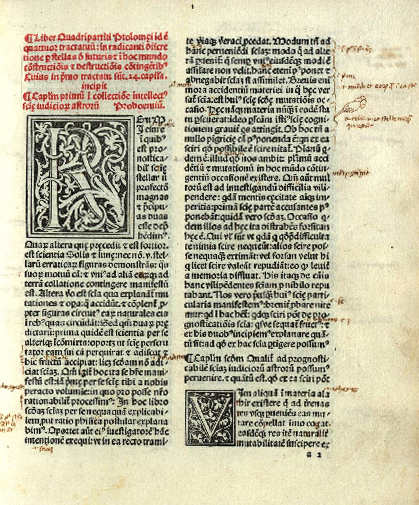
For the astrologers and other users of astronomical data Ptolemaeus produced his Handy Tables (Ptolemaiou Procheiroi kanones), to quote historian of Ancient Greek astronomy, Alexander Jones:
Ptolemy’s Handy Tables, the corpus of astronomical tables that he produced after completing the Almagest, largely adapting them from the tables embedded in that treatise, was a work of immense importance in later antiquity and in the medieval traditions of the Eastern Mediterranean and the Middle East. If the Almagest was the primary transmitter of the theoretical foundations of Greek mathematical astronomy, the Handy Tables was par excellence the practical face of that astronomy.
The Handy Tables were at least as influential as the Mathēmatikē Syntaxis during late antiquity and also during the Islamic Middle Ages.
Ptolemaeus also wrote a cosmology, the Planetary Hypotheses (Greek: Ὑποθέσεις τῶν πλανωμένων, lit. “Hypotheses of the Planets”). This is a physical realisation of the cosmos with his deferent/epicycle models of the planetary orbits embedded in the Aristotelian crystalline spheres. With the orbits determining the inner and outer surfaces of the spheres, Ptolemaeus was thus able to determine the dimensions of the cosmos. He estimated the Sun was at an average distance of 1,210 Earth radii, much too low, as we now know, while the radius of the sphere of the fixed stars was 20,000 times the radius of the Earth.
No Greek of Latin manuscript of the Planetary Hypotheses is known from antiquity, and it was long thought to be a lost work. In the fifteenth century, the Austrian astronomer, Georg von Peuerbach (1423–1461), produced his Theoricae Novae Planetarum (New Planetary Theory), which was the first book printed and published by his pupil Regiomontanus (1436–1476), in 1473, and it was the first ever mathematical/scientific book to be printed with movable type. This work of cosmology was, together with the Peuerbach’s and Regiomontanus’ Epitome of the Almagest, the textbook from which Copernicus learnt his astronomy. The Theoricae Novae Planetarum also presents Ptolemaeus’ deferent/epicycle models of the planetary orbits embedded in the Aristotelian crystalline spheres and was for several hundred years thought to be an original work by Peuerbach.
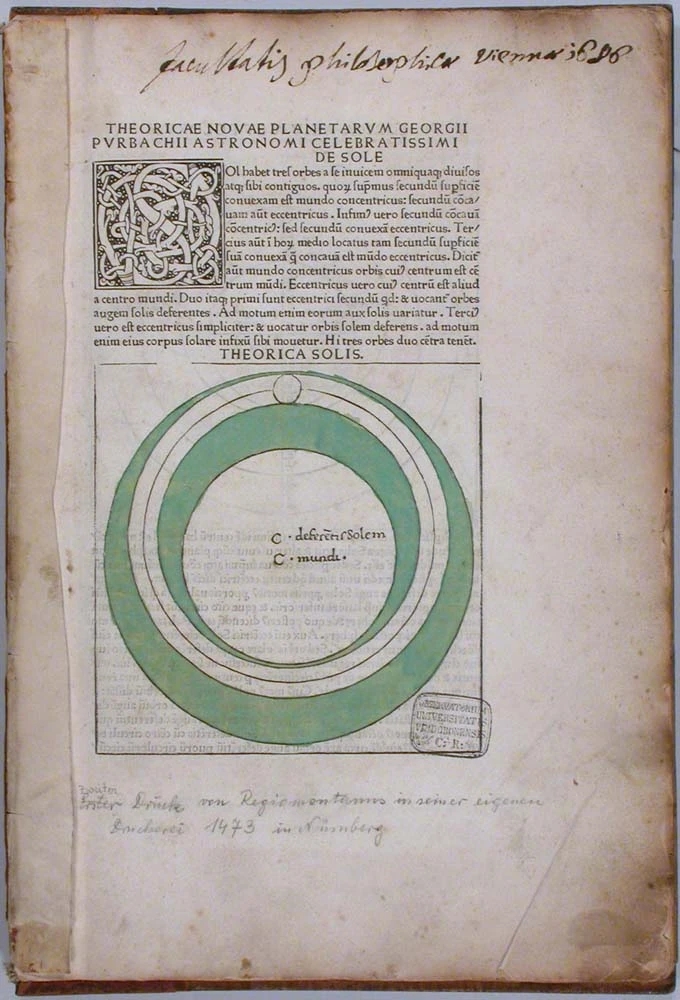
In the 1960s a previously unknown Arabic manuscript of Ptolemaeus’ Planetary Hypotheses was discovered, and it was obvious that Peuerbach’s work was an updated version of Ptolemaeus’, just as the Epitome of the Almagest was an updated version of the Almagest.
Ptolemaeus was also authored his Geōgraphikḕ Hyphḗgēsis, which became known in Latin as either the Geographia or Cosmographia, together with the Mathēmatikē Syntaxis and the Tetrabiblos it forms an interrelated trilogy of books. The Geōgraphikḕ Hyphḗgēsis is in different ways related to both books. It and the Mathēmatikē Syntaxis both use a longitude and latitude system; the Mathēmatikē Syntaxis to map the heavens, Geōgraphikḕ Hyphḗgēsis to map the Earth. However, they differ slightly, as Ptolemaeus uses and ecliptical system for the heavens and an equatorial one for the Earth. Hipparchus had used an equatorial system to map the heavens. It is important to note that the latitude/longitude system of mapping was first devised to map the celestial sphere and only later brought down to Earth to map the globe. Ptolemaeus adds in his Geōgraphikḕ Hyphḗgēsis that using astronomy is the best way to determine longitude and latitude for cartography. On a superficial level the three books are connected by the fact that one needs to know the latitude of a subject’s place of birth in order to cast their horoscope. However, for Ptolemaeus the connection between astrology and geography goes much deeper. Ptolemaeus thought that each of the four quarters of the Earth was connected to one of the four astrological triplicities–
Fire (Aries, Leo, Sagittarius), characteristics: hot, dry – the north-west quarter Europe
Earth (Taurus, Virgo, Capricorn), characteristics: cold dry – the south-eastern quarter Greater Asia
Air (Gemini, Libra, Aquarius) characteristics: hot, wet – the north-eastern quarter Scythia
Water (Cancer, Scorpio, Pisces) characteristics: cold, wet – the south-western Ancient Libya
These connections determined the general characteristics of each area and the population that lived there.
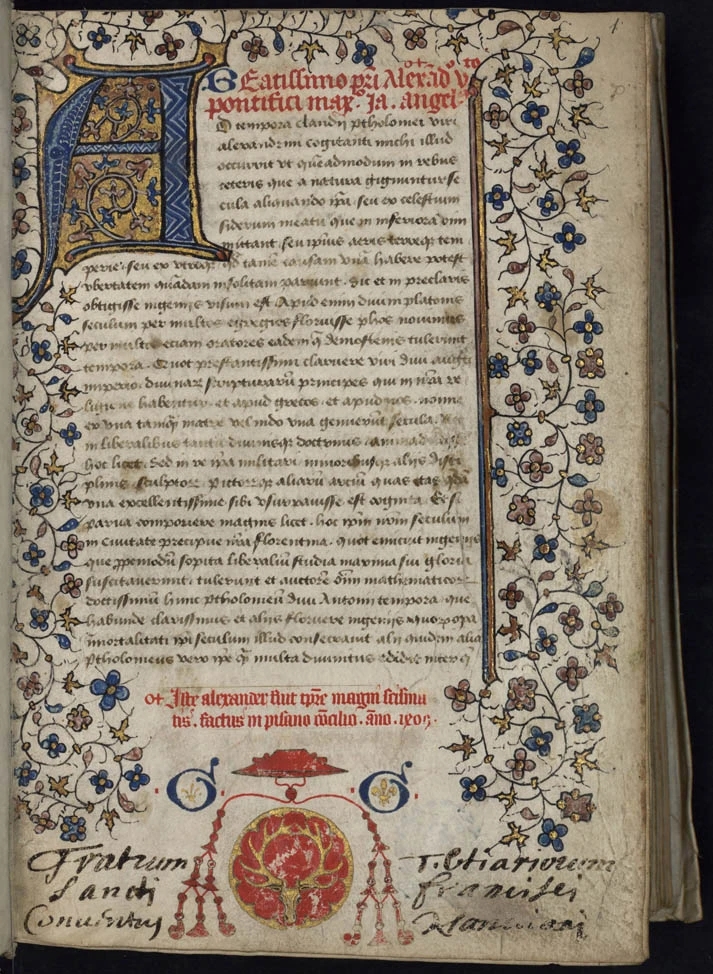
The Geōgraphikḕ Hyphḗgēsis was translated into Arabic by the nineth century and had a major impact on Islamic cartography. However, unlike the Mathēmatikē Syntaxis and the Tetrabiblos it was not translated into Latin in the twelfth century but first in 1406 by Jacobus Angelus. It had a fairly direct influence on European cartography changing the European approach to map making extensively and also very importantly, the need to accurately determine longitude and latitude, done astronomically as Ptolemaeus had recommended, was a major driving force in the attempts to reform astronomy, one aspect of which was Copernicus’ heliocentric system. That reform movement was also driven by a desire for more accurate astronomical data to improve astrological prognostications, due to rising status of astrology particularly in astro-medicine.
Often in popular literature written off as the out dated representative of an ignorant geocentric astronomy, Ptolemaeus’ publications actually had a major impact on and played a significant role in the renewal and modernisation of science in the fifteenth, sixteenth and seventeenth centuries that usually gets called the scientific revolution.